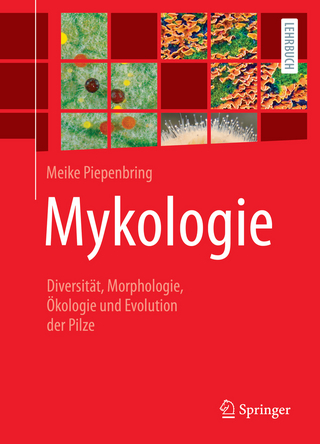
Floral Diagrams
Cambridge University Press (Verlag)
978-1-108-82573-3 (ISBN)
- Lieferbar (Termin unbekannt)
- Versandkostenfrei innerhalb Deutschlands
- Auch auf Rechnung
- Verfügbarkeit in der Filiale vor Ort prüfen
- Artikel merken
Floral morphology is key for understanding floral evolution and plant identification. Floral diagrams are two-dimensional representations of flowers that replace extensive descriptions or elaborate drawings to convey information in a clear and unbiased way. Following the same outline as the first edition, this comprehensive guide includes updated and relevant literature, represents the latest phylogeny, and features 28 new diagrams. Diagrams are presented in the context of the most recent classifications, covering a variety of families and illustrating the floral diversity of major groups of plants. A strong didactic tool for observing and understanding floral structures, these diagrams are the obvious counterpart to any genetic study in flowering plants and to the discussion of major adaptations and evolutionary trends of flowers. This book is invaluable for researchers and students working on plant structure, development and systematics, as well as being an important resource for plant ecologists, evolutionary botanists and horticulturists.
Louis P. Ronse De Craene is a botanist at the Royal Botanic Garden Edinburgh, and the Director of the MSc course in the Biodiversity and Taxonomy of Plants jointly organised with the University of Edinburgh. He has published more than 130 peer-reviewed papers and edited four books, and his main research interests are centred on floral morphology, the evolution of flowers and the use of floral characters in plant phylogeny. He has developed an internationally acclaimed expertise in floral structural morphology encompassing a broad range of angiosperm families.
Preface; Acknowledgements; Part I. Introduction to Floral Diagrams: 1. Introduction to flower morphology; 2. The significance of floral diagrams; 3. Floral diagrams used in this book; Part II. Floral Diagrams in the Major Clades: 4. Systematic significance of floral diagrams; 5. Basal Angiosperms: the ascent of flowers; 6. Monocots: variation on a trimerous Bauplan; 7. Early diverging eudicots: a transition between two flower types; 8. Basal Pentapetalae: the event of pentamerous flowers; 9. Rosids: the diplostemonous alliance; 10. Caryophyllids: how to reinvent lost petals; 11. Asterids: tubes and pseudanthia; Part III. Conclusions: 12. Distinctive systematic characters and apomorphic tendencies; 13. Floral diagrams and major Angiosperm groups; 14. Outlook; References; Glossary.
| Erscheinungsdatum | 07.04.2022 |
|---|---|
| Zusatzinfo | Worked examples or Exercises |
| Verlagsort | Cambridge |
| Sprache | englisch |
| Maße | 170 x 244 mm |
| Gewicht | 1040 g |
| Themenwelt | Kunst / Musik / Theater |
| Naturwissenschaften ► Biologie ► Botanik | |
| Naturwissenschaften ► Biologie ► Evolution | |
| ISBN-10 | 1-108-82573-7 / 1108825737 |
| ISBN-13 | 978-1-108-82573-3 / 9781108825733 |
| Zustand | Neuware |
| Informationen gemäß Produktsicherheitsverordnung (GPSR) | |
| Haben Sie eine Frage zum Produkt? |
aus dem Bereich


